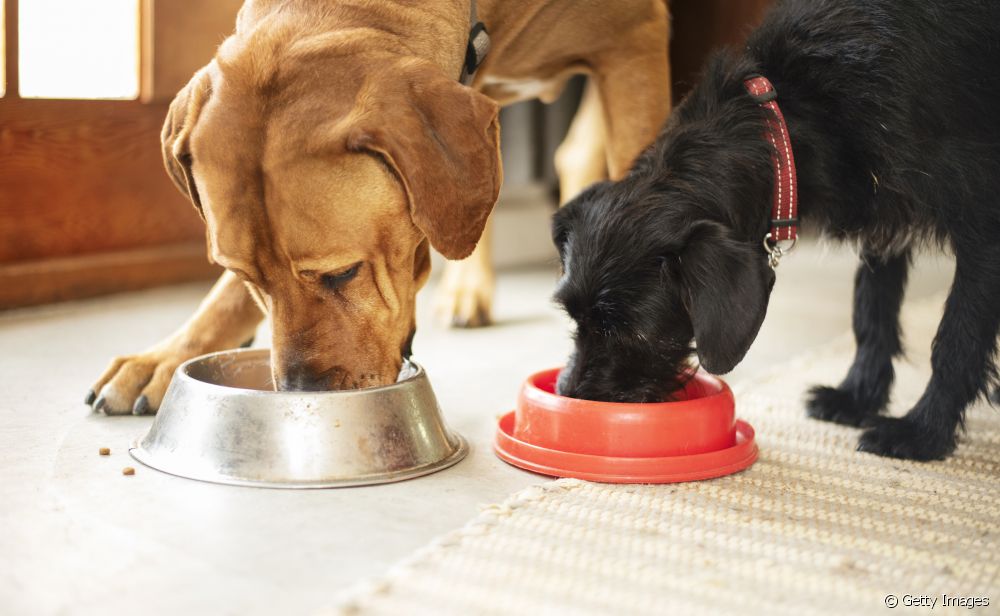Dog hair: 6 tips for a healthy coat

Table of contents
Keeping dog hair beautiful is not as difficult as it seems and some basic day-to-day care makes all the difference. Few guardians know, but food is a factor that greatly influences the appearance of dogs' coats. In addition, proper brushing and the use of products suitable for pets (according to the color and type of hair of your puppy) make all the difference. There are many ways to keep your dog's hair beautiful.doubts about the subject and, therefore, we have gathered 6 care that are super important to keep the dog's hair healthy and with a shine that will attract everyone's attention!
1) Dog bathing should occur regularly
Dogs do not need daily baths like humans - for everyday situations, hygiene with a moistened wipe is sufficient. The recommendation is that the dog bath happens at least once a month, and in some cases this interval may be longer or shorter, such as once every 3 months or every 15 days. Everything will depend on the type of coat of your four-legged friend, theOh, and don't forget to dry your friend very well after bathing to avoid skin problems due to humidity.
2) Pay attention to shampoos and dog-specific products at bath time
No human products on your dog's skin, huh? Dog shampoo, as well as conditioner, soap and other hygiene items, must be specific for pets. Veterinary products are formulated especially for dogs, with ingredients that do not harm the skin or cause allergies. Therefore, it is important to pay close attention when buying shampoo for dogs.right dog for your dog's coat color and type! If there are any questions or you need suggestions, it's worth talking to a vet to pick up tips.
3) Dog food helps keep the coat healthy
Everyone knows that dog food is a key factor in keeping pets in good health, but did you know that what they eat also affects their coat? Investing in good quality dog food is a great way to ensure that your puppy has access to all the nutrients they need that can help keep their coat looking beautiful and healthy. The components omega 3,omega 6, zinc, vitamins A and E, for example, make all the difference when it comes to leaving your dog with a silky and shiny coat - and are usually included in Premium or Super Premium type diets.
See_also: Cervical collar for dogs: what is it and what is it for?
4) Brushing the dog's hair should not be left aside
All dogs need to have their hair brushed, some more often and some less often. Brushing is the only way to remove dead hair and prevent tangles in the case of furrier dogs - and, of course, to keep the dog's coat looking healthier and more beautiful. The frequency of dog hair brushing will depend mainly on the breed of dog, as somedog breeds shed more hair than others or require more specific care. Another factor that can also influence the amount of times your friend needs to be brushed is the time of year, as dogs go through periods of seasonal change in which their hair falls out more than usual.
5) Drying dog hair is necessary to avoid fungal problems
Whenever your puppy gets wet, be sure to dry its coat very well - whether after a bath, a walk in the pool or an unexpected rain. Moisture is a danger, as it makes the dog's skin conducive to the emergence of fungi and bacteria, which can trigger various skin problems and damage the health of the hair. A good way to ensure that the animal is completely dry is with a drying pad.towel and a hairdryer at warm temperature.
6) Moisturizing and sunscreen for dogs are an important care
Dog moisturizers are not exactly a novelty on the market, but not all pet parents know the need behind them. On colder days, the dog's skin can become dry very easily, and the best way to get around this is to encourage water intake and use a dog moisturizer, which should be for veterinary use. On hot days, however, andespecially during walks, it is important not to forget sunscreen for dogs, as it helps protect your friend's skin from the sun's rays and possible burns.
See_also: Pyoderma in dogs: understand more about the causes, characteristics and treatment of this bacterial infection
